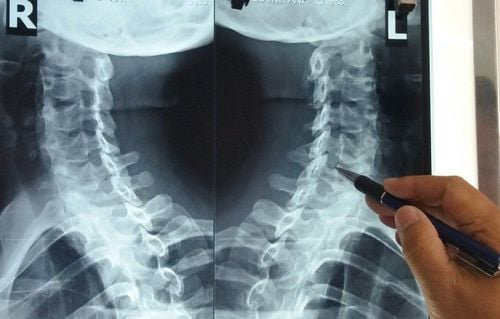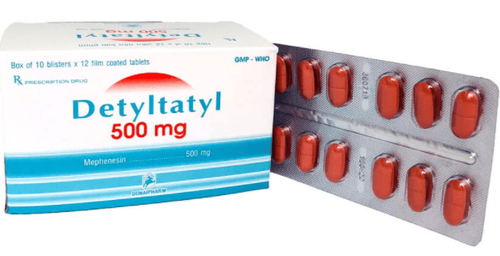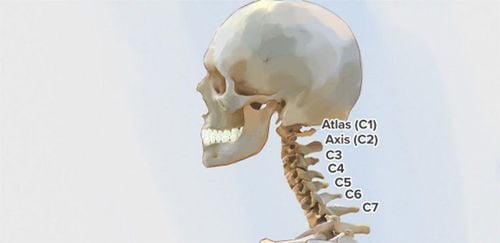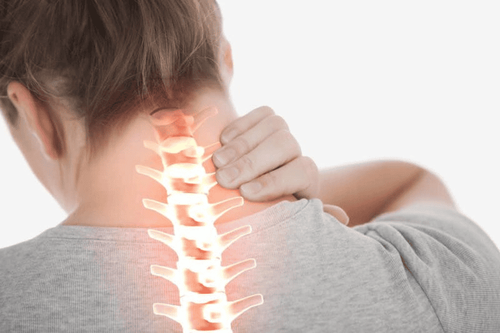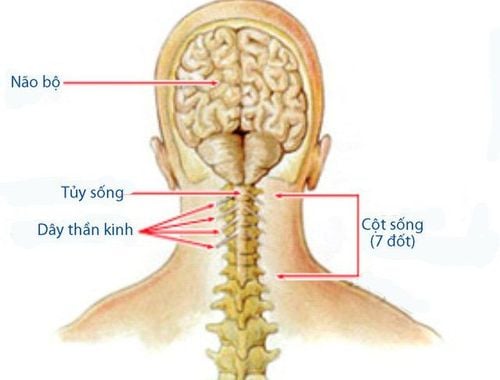This is an automatically translated article.
The article was written by Master, Specialist Doctor I Nguyen Thi Thanh Binh - Rehabilitation Doctor - Department of General Surgery - Vinmec Danang International General Hospital.
Congenital torticollis or fibrosis of the sternocleidomastoid muscle causes severe malformations of movement and aesthetics of children, especially neck movements. The disease can be treated conservatively if detected early.
1. What is sternocleidomastoid fibrosis?
Fibromyalgia is a condition in which partial fibrosis of the sternocleidomastoid muscle due to fetal position or a birth accident leads to limited range of motion of the cervical spine. The cause is unknown, so there are no effective preventive measures.
Many researchers believe that the main cause of this syndrome may be the poor posture of the fetus in the uterus; The mother during pregnancy lacks exercise, leading to limited nutrition of the sternocleidomastoid muscle; or during childbirth, the sternocleidomastoid muscle is injured, the blood vessels in the muscle bleed, from the fibrous clot that stimulates this muscle group to contract.
The main clinical signs are possible tumor of the sternocleidomastoid muscle and limited range of motion of the cervical spine. It should be treated as soon as possible after detection to soften the fibrous mass, maintain range of motion in the cervical spine, and prevent secondary deformities in the craniofacial and cervical spine.

2. Early signs
An early sign is that the baby often tilts the head to one side and the face looks to the opposite side.
We can observe the baby tilting the head to one side and can be palpated on the sternocleidomastoid muscle with a solid muscle mass (different from the nodal response in inflammatory diseases) or without a fibrous mass. cleavage shortened due to fetal contraction due to position
3. Diagnosis
The disease is usually detected by an obstetrician, if a newborn has a muscle tumor that is noticeable after 10-15 days. Tumors grow in 2-4 weeks, then get smaller and disappear after 5-6 weeks.
On the sternocleidomastoid muscle of the child, there is a solid tumor (the tumor may disappear on its own after 3-4 months), the contracture muscle emerges as a stiff cord pulling the head to one side and tilting the face. On the opposite side, long-term can be crooked, limited spinal movement, skull deformity if not treated or treated improperly.
Common deformities are distorted head, droopy eyes, half flat face, convex mastoid, clavicle and shoulder on the deformed side higher than normal.
However, there are many cases where the sternocleidomastoid muscle tumor is not seen, the child has shortened muscle contraction due to the position in the fetus
4. Treatment
The disease can be treated conservatively with physical therapy if detected early. If detected late, surgery is required.The aim of treatment is:
Prevention of muscle shortening caused by contracture of the sternocleidomastoid muscle. Restore normal range of motion of the cervical spine. Correct posture, prevent secondary deformities occurring in craniofacial and cervical spine. If detected and treated early, the disease can be completely cured, the later it is easy to cause many complications and difficulties for treatment, even seriously affecting aesthetics and health.

4.1 Conservative treatment (non-surgical) Suitable for children under one year of age, 2 weeks after birth, treatment should be carried out.
Exercise 1: Massaging muscles:
Perform gentle massage on the sternocleidomastoid and trapezius muscles on the side of the neck that is tilted.
Patient position:
Place the baby on the mother's lap, the child's shoulders coincide with the edge of the thigh, the baby's head is supported by the mother's hand, the neck is stretched and tilted to the right side, facing the side of the neck.
Technique:
One hand of the mother to support the baby's head The other hand uses the thumb or index finger and middle finger to gently rub along the sternocleidomastoid muscle or on the fibroma, taking care not to press too hard on the skin to avoid swelling and redness. painful for children. Exercise 2: Stretching sternocleidomastoid muscle:
Perform 3 times a day, after massaging, the mother stretches by hand gently, slowly, by pushing tilt and turning the head to bring the baby gently towards the opposite side. perform while the child is sleeping or playing, relax completely and stop as soon as the child resists.
Patient position:
Place the patient in a position for muscle massaging.
Technique:
The mother supports the baby's head with both hands in a comfortable position to help the baby not cry or struggle, Perform stretching by bringing the baby's head to the supine position -> gradually turn the baby's face to the opposite side Perform a slow stretch, the mother feels the moderate tension of the muscle being stretched, then immediately stops for 5 seconds and then brings the baby's head back to the neutral position. Stretching combined with alternating massage during the treatment. Exercise 3: Stretching with posture.
Feed the baby from the breast opposite the side of the disease to stimulate the baby to turn the head to the affected side to help stretch the muscles to increase neck range of motion (for example, a baby with right muscle should feed on the mother's left breast) Holding the baby lying down Tilt and tilt the head to the healthy side (diseased side below). Put the baby's head in a neutral position when sleeping, place 2 towels on either side of the head. When the baby is lying on one side, place a small pillow on the head on both sides. Exercise 4: Active stretching:
Use colorful toys to stimulate the child to actively rotate his head in the prone position, lying on his back to achieve a symmetrical position.
Points to note
Do not put the head to rotate when the baby sleeps on either the healthy side or the sick side as some documents write because it will cause more neck flexion (if the head is rotated on the sick side) or the child is pinched. breathing (if the head is turned to the right side). The above three exercises are performed until the child has achieved the same range of neck motion on both sides. The tumor will disappear on its own when the child is 6-8 months old. Stretch gently, do not stretch to the maximum immediately, but slowly stretch. Do not exercise when the child cries, resists Exercise before feeding 4.2 Surgical treatment Usually applied to children over one year old, after receiving active conservative treatment, correct method for more than 6 months without any results. fruit. Usually surgery to cut both lower ends of the sternocleidomastoid muscle, then fix the plaster for 3-4 weeks and continue rehabilitation with physical therapy.
Please dial HOTLINE for more information or register for an appointment HERE. Download MyVinmec app to make appointments faster and to manage your bookings easily.





